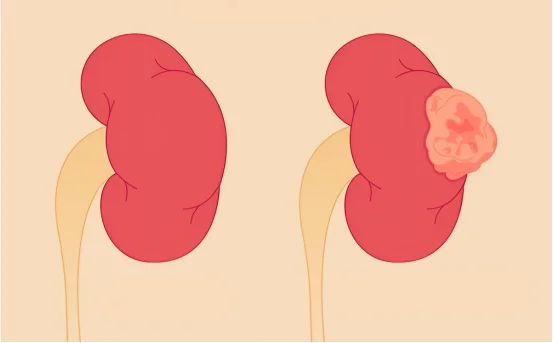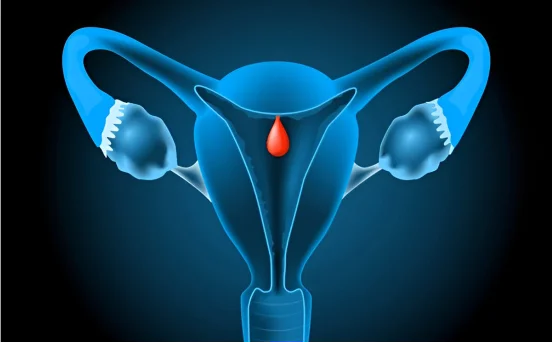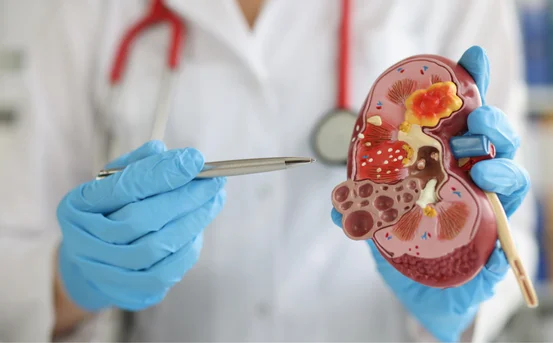Pyeloplasty surgery falls under the category of urological surgeries and is done to treat the obstruction, or narrowing of passage, at the ureteropelvic junction (UPJ) where the kidney and ureter meets. This condition, known as UPJ obstruction, causes the accumulation of urine in the kidney, resulting in pain, infections, or damage to the kidney. Understanding the what is pyeloplasty surgery.
This surgical approach helps alleviate the blockages by sectioning off the damaged segments and reattaching the healthy ones, thus restoring the flow of urine from the kidney to the bladder. While pyeloplasty is primarily performed on infants and young children, adults with this condition also require surgical intervention.
Why is Pyeloplasty Surgery Done?
Pyeloplasty is done to resolve UPJ obstruction which can be congenital (from birth) or caused later in life from trauma, kidney stones, or scarring. This surgery is necessary to:
- Prevent damage to the kidney
- Relieve flank or abdominal discomfort
- Prevent recurrent urinary tract infections (UTIs)
- Enhance kidney drainage and function
- Maintain overall kidney health
- If left untreated, UPJ obstruction can lead to hydronephrosis where the kidney swells due to urine buildup, resulting in an increased risk of long-term complications.
Symptoms of UPJ Obstruction (Indications for Pyeloplasty)
Being aware of the symptoms of ureteropelvic junction obstruction can allow for early diagnosis and prompt surgical treatment. Some common signs and symptoms are:
- Dull pain on the side or back (flank pain)
- Swelling or mass in abdomen
- Recurrent UTIs or pyelonephritis
- Nausea and vomiting
- Hematuria (blood in urine)
- Reduced urine output (in severe cases)
- Poor weight gain and feeding in infants
- In many cases, particularly in newborns, this condition is identified during ultrasound imaging in the prenatal phase.
UPJ Obstruction Causes
There is a definite reason a patient requires a pyeloplasty and that is due to an obstruction at the UPJ with some form of structural complication. The causes include:
Congenital Abnormalities
This is the most common cause, where children are born with some form of kink or narrowing at the ureteropelvic junction.
Acquired Causes
- Kidney stones
- Scar tissue of vessels due to infections and/or surgeries.
- Crossed vascular structures (abotant vessels) of the ureter.
- Tumors or compression from outside the body.
Any of the above can cause obstruction to the passage of urine which may be rectified with a pyeloplasty.
Diagnosis Prior to Pyeloplasty
Prior to determining the need for pyeloplasty, there is a careful assessment of the patient’s kidneys to determine their functionality along with the site, as well as the degree of the obstruction to formulate and plan the appropriate surgery.
Common procedures may be:
Kidney ultrasound
Detects hydronephrosis (the lumen of the kidney has fluid in it swelling).
Diuretic Renal Scan (MAG3 or DTPA scan)
Determines the level of function for the kidney along with urinary drainage.
CT Urogram or MRI Urogram
Offers detailed imaging of the urinary tract for a particular area of interest for the obstruction.
Voiding Cystourethrogram (VCUG)
Looking for reflux of urine from the bladder back into the kidneys.
Types of Pyeloplasty Surgery
Open Pyeloplasty
This approach is characterized by an incision made on the flank region, which is the side of the body between the ribs and the hip. While this method is still effective, it does have a longer recovery time when compared to other options.
Laparoscopic Pyelopasty
In this form of surgery, a camera is used in conjunction with small incisions to perform the surgery. The recovery period is significantly shorter and pain levels are minimized in comparison to the open pyeloplasty method.
Robotic-Assisted Pyeloplasty
This method of surgery is with the help of a robotic device specially designed to perform surgery with enhanced precision. This method is becoming common for children as well as adults.
The Pyeloplasty Procedure – Step by Step
- Anesthesia Stage: The patient who will undergo pyeloplasty surgery will be given general anesthesia.
- Access Stage: During the access stage of the surgery, either one larger or multiple smaller incisions are made.
- Removing obstruction: For the step where the blockage is removed, the surgeon cuts away the narrowed section in the UPJ.
- Reconnect: In this stage, both sections of the kidney pelvis and ureter that were previously removed are stitched back together.
- Stent placement: In order to assist with the healing process as well as maintaining urine flow, it is common to place a temporary stent also known as a DJ stent.
- Closure: Finally, the surgical area is closed and the patient is transferred to the recovery position.
Most of these surgeries take around two to three hours to complete.
Recovery After Pyeloplasty Surgery
Effective postoperative care is integral not only for healing but also for the restoration of renal functions. Here are the expected recovery milestones:
- Hospital Stay: Based on the type of surgical procedure performed, the patient is likely to stay in hospital for 1–3 days.
- Pain Management: Mild discomfort is normal and will be managed with prescribed medications.
- Activity Restrictions: Heavy physical activities are to be avoided for a few weeks.
- Stent Removal: In case a stent is placed, it is normally removed 4–6 weeks postoperatively.
- Follow-Up: Imaging studies may be performed to assess the drainage and functions of the kidney.
Most patients resume their routine activities within 2 to 4 weeks post-surgery.
Benefits of Pyeloplasty Surgery
Restores normal urine flow.
- Prevention of future kidney infections.
- Reduces or eliminates pain.
- Preserves long-term kidney function.
- High success rate (over 95% in most cases).
Possible Risks or Complications
With pyeloplasty being regarded as a safe treatment, there are risks associated with it such as:
- Infection.
- Bleeding.
- Urine leakage.
- Scar tissue formation.
- Re-obstruction (rare).
The risks outlined above can be mitigated through selection of a skilled urologist and appropriate postoperative management.
Conclusion
Pyeloplasty remains one of the most effective surgical treatments available for ureteropelvic junction obstruction. It can provide sustained relief and improvement in renal function. For parents of children with UPJ obstruction or adults troubled by persistent flank pain, accurate and timely diagnosis, coupled with surgical intervention, can safeguard renal function.
Because modern minimally invasive approaches, such as laparoscopic and robotic pyeloplasty, are faster and more comfortable, they remain safe options for the majority of patients.
If you or someone you care about exhibits symptoms of UPJ obstruction, please consult a urologist to see whether pyeloplasty is an appropriate option.























